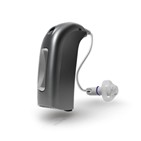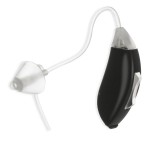Q: When is a hearing aid not a hearing aid?
A: When it is a “Personal Sound Amplification Product” or “PSAP.”
Hearing Aid $2,500 Personal Sound Amplifier $474.50
The FDA defines a hearing aid as “a sound-amplifying device intended to compensate for impaired hearing” but PSAPs “are not intended to make up for impaired hearing. Instead, they are intended for non-hearing-impaired consumers to amplify sounds in the environment for a number of reasons, such as for recreational activities.”
Although, I’m sure the FDA’s intentions are good – they do not want people with hearing loss to harm their hearing by not seeing a doctor and/or by purchasing a device that may not meet their needs…………or worse, may damage their hearing. However, in reality, many hearing impaired people are buying PSAPs.
I decided to research this topic and see what’s out there. Yikes! This has become a bigger project than I expected! In addition to the PSAP’s there are many hearing aids being sold online or over-the-counter.
I will start by saying ANYONE who suspects they have a hearing loss should see an ENT (ear, nose and throat doctor – otolaryngologist). There may be a serious medical condition causing the hearing loss or there may be a simple problem such as wax in the ears. This should always be the first step in searching for a solution to hearing loss.
According to the Center for Hearing and Communication (http://www.chchearing.org)
–Approximately 12% of the U.S. population or 38 million Americans have a significant hearing loss.
–People with hearing loss wait an average of 7 years before seeking help.
–15 million people in the United States with hearing loss avoid seeking help.
The high cost of hearing aids is probably one of the reasons people avoid seeking help for their hearing loss. So, it may be a good thing that these less expensive solutions are available. However, I would approach them with caution!
Personally, I prefer to be treated by an experienced audiologist who has the skills and knowledge to provide me with the best hearing aids for my needs. I greatly value her expertise, her ability to adjust my hearing aids as needed, and her continued care in tracking my hearing loss over the years.
Having said that, I will share what I learn about PSAP’s in my next blog post. Stay tuned!
Filed under: Uncategorized |




Good article . Well written
[…] You’ve probably seen many ads for listening devices that look just like hearing aids……but sell for about $20! If you haven’t, just do a search for “hearing aids” on Amazon. You will see hundreds of devices called “hearing amplifier,” ”sound amplifier,” ” “hearing device,” “hearing enhancement,” etc. The general term for these devices is Personal Sound Amplification Products (PSAP’s). To learn how they differ from hearing aids, please see my blog post, “When is a hearing aid not a hearing aid?“ […]
[…] my last two blog posts, “When is a hearing aid not a hearing aid?” and “Personal Sound Amplification Products – PSAP’s,” I have been […]